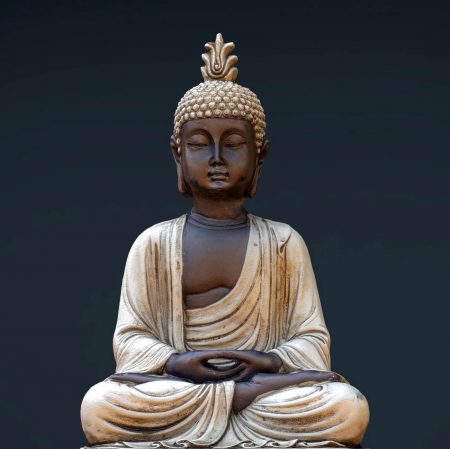Buddha Purnima 20/05/2019 – Posted in: Press Information Bureau – Tags: buddhism, gautam buddha
Buddha Purnima
(President’s Secretariat)
WHAT
On the Occassion of Buddha Purnima, the President of India, Shri Ram Nath Kovind offer warm greetings and good wishes to all fellow citizens as well as followers of Lord Buddha across the world.
17TH MAY – INTERNATIONAL BUDDHA VESAK DAY
The General Assembly recognized internationally the Day of Vesak to acknowledge the contribution that Buddhism, one of the oldest religions in the world, has made for over two and a half millennia and continues to make to the spirituality of humanity. This day is commemorated annually at the UN Headquarters and other UN offices, in consultation with the relevant UN offices and with permanent missions, which also wish to be consulted.
GAUTAM BUDDHA
- Siddhartha, who later became known as the Buddha – or The Enlightened One – was a prince who forsook the comforts of a palace to seek enlightenment.
- Siddhartha Gautama was born in 624 BC, in a Sakya clan in Lumbini near Kapilvastu (Nepal).
- He was born to Shudhodana and Mahamaya.
- He was married to Yashodhara and he had a son Rahula.
BUDDHA VESAK
- Buddha was an influential spiritual teacher during and after his lifetime. Many Buddhists see him as the Supreme Buddha.
- The decision to celebrate Vesak as the Buddha’s birthday was formalized at the first conference of the World Fellowship of Buddhists.
- This conference was held in Colombo, Sri Lanka, in May, 1950. The date was fixed as the day of the Full Moon in May.
- Different Buddhist communities may celebrate Vesak on different dates in years when there are two full moons in May. This is because the Buddhist lunar calendar can be interpreted in different ways.
SYMBOLS
- The dharmachakra or dharma wheel is a symbol often seen during Vesak.
- It is a wooden wheel with eight spokes.
- The wheel represents Buddha’s teaching on the path to enlightenment.
- The eight spokes symbolize the noble eightfold path of Buddhism.
Eight-fold Path of Buddha is known as Astanga margha. The Eight fold path is:
- Right livelihood
- Right observation
- Right determination
- Right action
- Right meditation
- Right exercise
- Right speech
- Right memory
THREE RATNAS OF BUDDHISM
- Buddha
- Dhamma – The teachings of Budhha
- Sangha – Community of Buddhist monks and nuns
THE FOUR GREAT TRUTHS
- The world is full of sorrow and misery.
- The cause of all pain and misery is desire.
- Pain and misery can be ended by killing or controlling desire.
- Desire can be controlled by following the Eight Fold Path.
SPREAD OF BUDDHISM
- Pali language has a prominent role in the spread of Buddhism.
- Emperor Ashoka and Kaniska had a keen interest in spreading Buddhism.
- Buddha also organised the Sangha as a religious order, whose doors were open to everybody, irrespective of caste and sex.
- They promoted education through residential universities like Valabhi, Nalanda and Vikramshila.
- After the death of Buddha, the monks assembled four times and the effect of these events had a great impact of spreading of Buddhism.
Source: PIB
You can follow us on LinkedIn and on Instagram (Diligent IAS) for more updates related to IAS Preparation/ Study Material, Subscribe to our Facebook Page and Youtube Channel- Diligent IAS
Also read more PIB Updates

